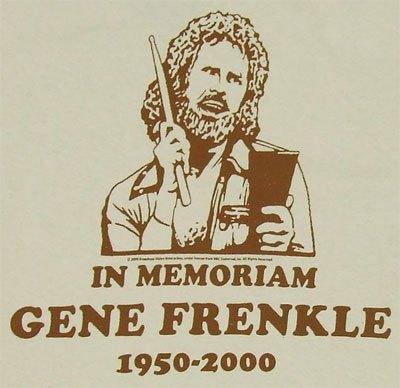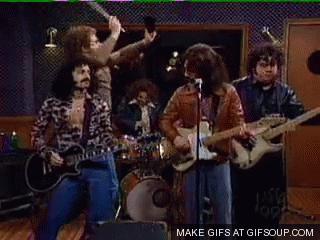
I have a fever for exploring the curious life of one of the most bizarre and compelling comic sketches to work itself into the American grain, the collective unconsciousness, cultural zeitgeist, internet meme-life, and merchandising half-life: Saturday Night Live’s (SNL) “More Cowbell,” first shown on 08 April 2000. According to Wikipedia (yes, “More Cowbell”–the catch phrase–has its own page), “the sketch is often considered one of the greatest SNL sketches ever made, and in many ‘best of’ lists regarding SNL sketches, it is often placed at number one [citation needed].” I don’t understand why Wikipedia wants a citation for this statement; we don’t need any stinking citations for something that is so clearly and indisputably true. I have a “More Cowbell” app on my phone to prove it.
Here is a link to the sketch itself: More Cowbell Full Sketch
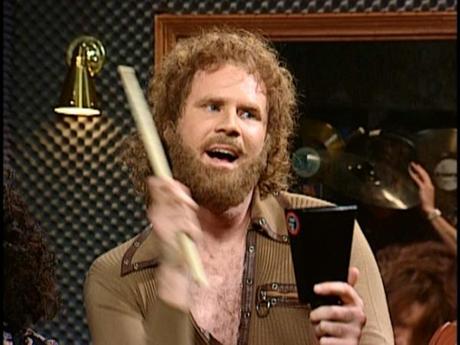
The sketch, written by Will Ferrell, is inscrutable and inexplicable, which makes it a perfect tool for teaching American humor. In the introductory days of a class I teach called American Popular Humor, I have always included contemporary sketch comedy as a way to get students to explore what makes humans laugh and also to break down that laughter into components. In short, I ask them to dissect the humor. It is what teachers do, with apologies to the damage inherently done to the sheer joy provided by humor itself.
I have found that “More Cowbell,” provides an ideal source for exploring the layers of humor in any given piece of material. The sketch offers the complexity of T. S. Eliot’s “The Love Song of J. Alfred Prufrock.” That is a joke with its own layers (which is what humor scholars say when a joke is not as funny as they think it should be). Actually, most of Eliot’s poetry is a bit more complicated that a Will Ferrell SNL sketch, but almost nobody cares, and nobody wears a t-shirt with “More Prufrock” on it. If I am wrong about that, I am sorry–and saddened, as I gaze at my own rolled-up slacks. If I am the first the come up with that idea, I freely grant full licensure to anyone who wishes to make such a shirt. Surely, there are a few English grad students who would scrounge enough money together to buy it.
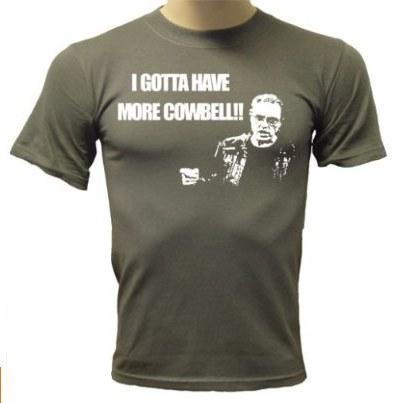
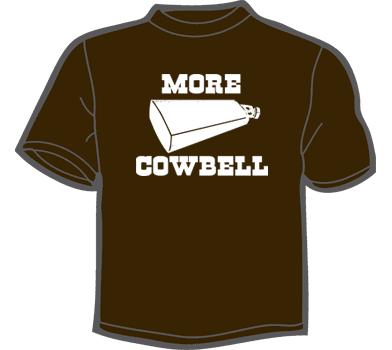
But “More Cowbell” as both a fine example of American humor and a cultural phenomenon provides a useful and fun way to talk about humor and how laughter depends on some many tenuous moments. Students bring much to such a discussion built around “More Cowbell,” because they are familiar with it and recognize its references. With that in mind, a discussion of the sketch can lead to a stronger awareness of how the humor of any given sketch depends on far more than the quality of the writing and performances. The context is the thing.
First, the sketch is funny in and of itself. It is built around simple incongruities, most obviously regarding the overblown attention that a simple instrument like a cowbell earns in the production of a rock song., in this case, “(Don’t Fear) the Reaper” by Blue Oyster Cult. The supposedly famous producer–the Bruce Dickinson, played by Christopher Walken, creates the first true comic moment of the bit by pronouncing his desire for “more cowbell.” This is incongruous–and funny–because anyone who has ever listened to the song would be hard-pressed to argue that it needs more cowbell. But even so, those hearing the song opening measures for the first time can recognize how prominent the cowbell is along with the dominating physical presence of Will Ferrell (as “Gene Frenkle,” the fictional lead cowbell player). That is the core written joke of the sketch: a great producer has a curious (and absurd) passion for more cowbell. Additionally, the sketch is an astute parody of the silly hyper-seriousness afforded to rock bands and their recording processes; the sillier-still seriousness of the VH1 rockumentary as a medium. All of this makes the sketch funny but alone is certainly not enough to earn or explain its legendary status. No, that comes from the live performance and the audience’s willingness to embrace the intangibles of the sketch. This is the point I am eager for students to embrace–the essential interaction between comic performances and audience desire.
“More Cowbell” is a funny bit that becomes hysterically funny in the moment based on the live performance. Students generally first assert that they enjoy the laughter of the actors on stage. This has been a key to the success of SNL from the beginning: audiences love when a performer breaks character and laughs–or, more appealingly, tries to suppress laughter. It is infectious. Jimmy Fallon’s SNL career, his greatest moments, are almost exclusively built around his difficulty in playing a straight man. The other players crack up as well. The sketch finds that magical balance between good comedic writing and the stage energy on the verge of chaos. The sketch is on the verge of collapse at every moment.
Which brings us to Christopher Walken, the essential component of the sketch as written and as performed. Students generally assert, without qualification, that Walken is the only actor that fit for that roll. His off-stage quirkiness carries into the performance itself in the minds of viewers. In short, “the Bruce Dickinson” is funny because Christopher Walken is weird, baby.
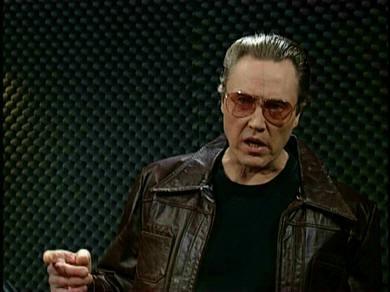
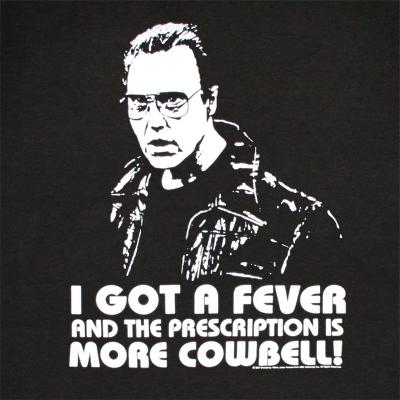
American humor at its best is alive and always feeding on the moment. That does not mean it must always be “live,” so to speak. Rather, it means that the humor must always derive from the energy between performer and audience and a mutual love and disdain for the world they share.
As “More Cowbell” has become more entrenched as a “classic” SNL sketch, it has become funnier still. For many of us, it also carries the warm glow of nostalgia for those times before we started rolling up our pants and counting our coffee spoons, when we could still stay awake late enough to see SNL and could recognize the hosts and the musical guests, and when those guests played musical instruments, and sometimes cowbells.
